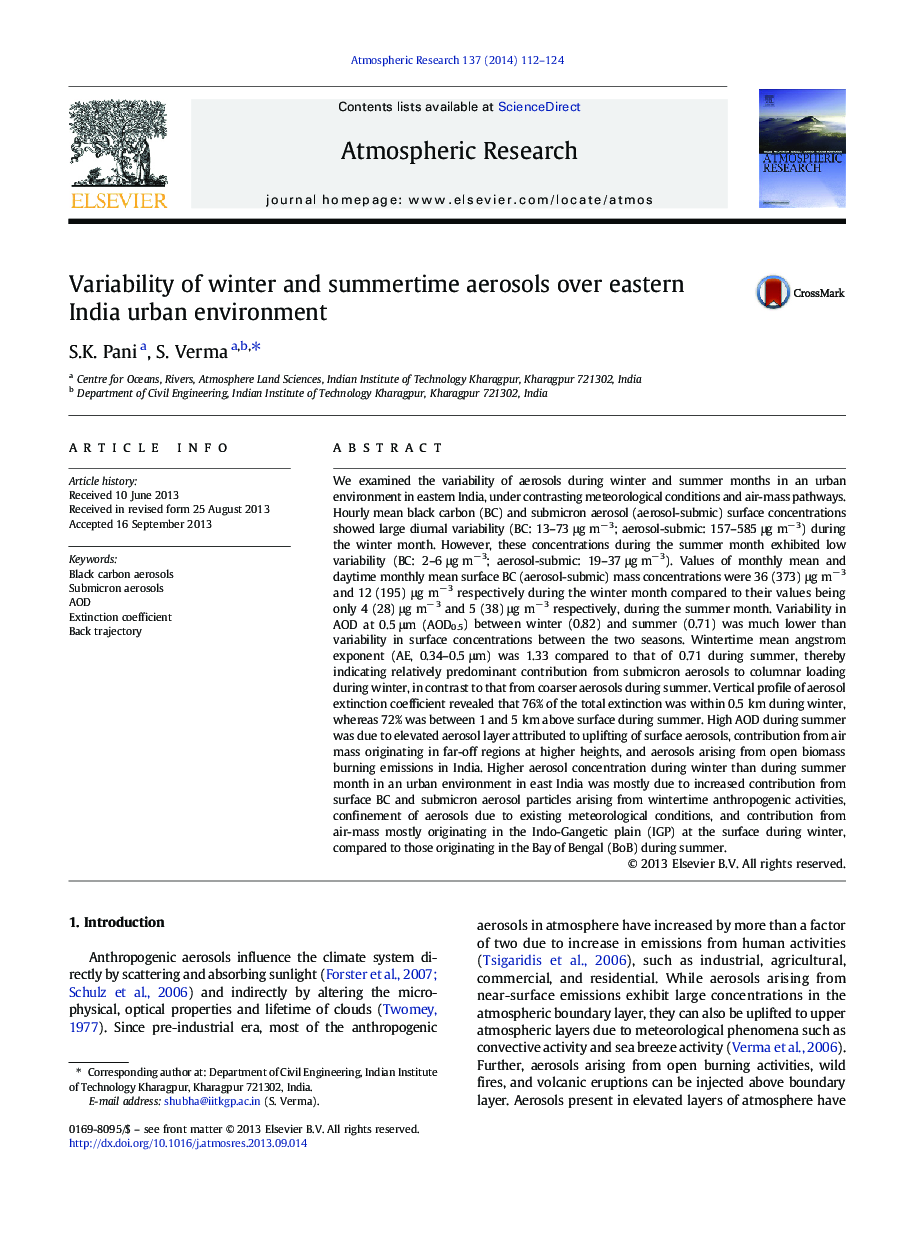| کد مقاله | کد نشریه | سال انتشار | مقاله انگلیسی | نسخه تمام متن |
|---|---|---|---|---|
| 4449936 | 1620533 | 2014 | 13 صفحه PDF | دانلود رایگان |
• Wintertime BC and aerosol-submic concentrations exhibited diurnal variability.
• Summer daytime mean BC and aerosol-submic were 2 and 5 times lower than during winter.
• Wintertime mean AOD0.5 was only 1.15 times higher than summertime mean AOD0.5.
• Wintertime mean angstrom exponent was 1.33 compared to that during summertime being 0.71.
• Surface layer in winter and elevated layer in summer contributed mostly to total extinction.
We examined the variability of aerosols during winter and summer months in an urban environment in eastern India, under contrasting meteorological conditions and air-mass pathways. Hourly mean black carbon (BC) and submicron aerosol (aerosol-submic) surface concentrations showed large diurnal variability (BC: 13–73 μg m− 3; aerosol-submic: 157–585 μg m− 3) during the winter month. However, these concentrations during the summer month exhibited low variability (BC: 2–6 μg m− 3; aerosol-submic: 19–37 μg m− 3). Values of monthly mean and daytime monthly mean surface BC (aerosol-submic) mass concentrations were 36 (373) μg m− 3 and 12 (195) μg m− 3 respectively during the winter month compared to their values being only 4 (28) μg m− 3 and 5 (38) μg m− 3 respectively, during the summer month. Variability in AOD at 0.5 μm (AOD0.5) between winter (0.82) and summer (0.71) was much lower than variability in surface concentrations between the two seasons. Wintertime mean angstrom exponent (AE, 0.34–0.5 μm) was 1.33 compared to that of 0.71 during summer, thereby indicating relatively predominant contribution from submicron aerosols to columnar loading during winter, in contrast to that from coarser aerosols during summer. Vertical profile of aerosol extinction coefficient revealed that 76% of the total extinction was within 0.5 km during winter, whereas 72% was between 1 and 5 km above surface during summer. High AOD during summer was due to elevated aerosol layer attributed to uplifting of surface aerosols, contribution from air mass originating in far-off regions at higher heights, and aerosols arising from open biomass burning emissions in India. Higher aerosol concentration during winter than during summer month in an urban environment in east India was mostly due to increased contribution from surface BC and submicron aerosol particles arising from wintertime anthropogenic activities, confinement of aerosols due to existing meteorological conditions, and contribution from air-mass mostly originating in the Indo-Gangetic plain (IGP) at the surface during winter, compared to those originating in the Bay of Bengal (BoB) during summer.
Journal: Atmospheric Research - Volume 137, February 2014, Pages 112–124
